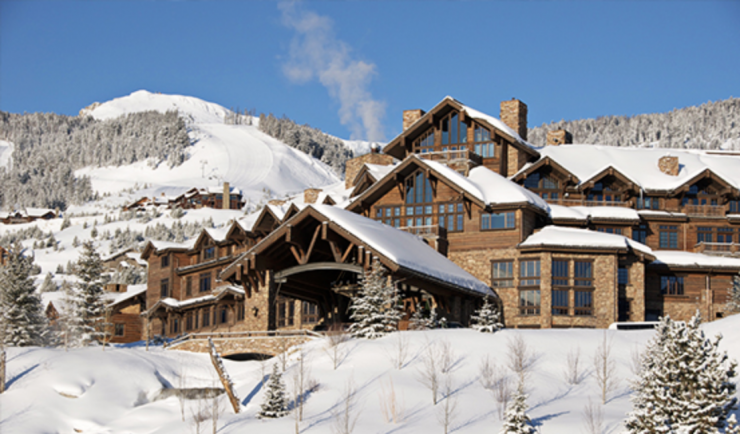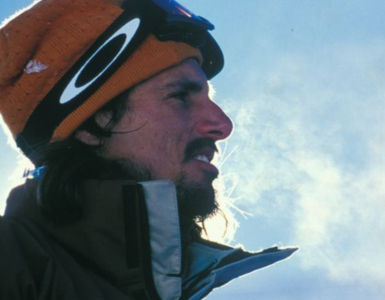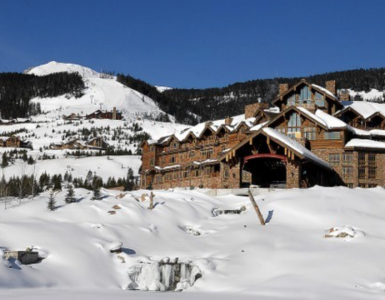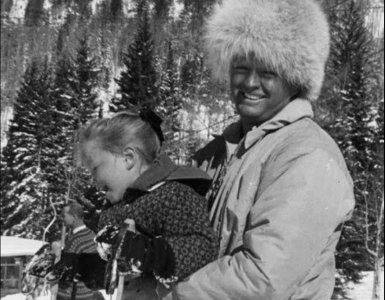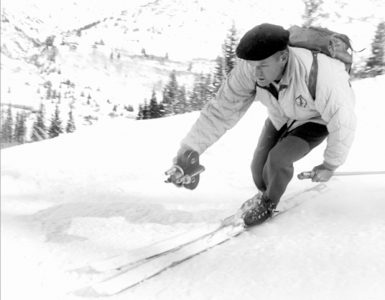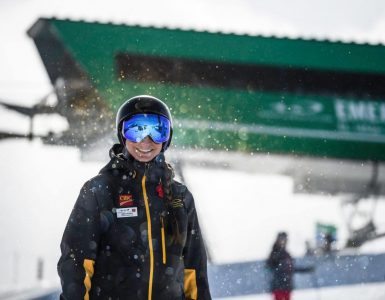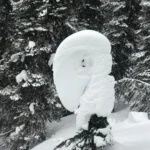By Warren Miller
 At some point in life, most people get the crazy idea that it might be fun to build their dream home. However, anyone who has ever thought it would be fun to build their dream home knows that dreams can quickly turn into nightmares.
At some point in life, most people get the crazy idea that it might be fun to build their dream home. However, anyone who has ever thought it would be fun to build their dream home knows that dreams can quickly turn into nightmares.
A dream home is an evolving thing throughout life. I’ve had several opportunities to build different dream homes in my life, most recently when I built my dream home times two…one for the island and one for the ski club. These two dream homes are a far cry from my first dream home.
Recently I received two photographs of a log cabin that had been raised up five feet on interlocking blocks of wood so someone could pour a higher foundation under it and raise the floor level in the event that Trail Creek in Ketchum, Idaho ever flooded. My old friend Ted Mosher sent the photos to me and they evoked a lot of memories because the log cabin was the first “dream home” that I had started building in the spring of 1949.
During the summer of 1948, I went to Sun Valley to buy a vacant lot, build a small cabin, and teach skiing for the rest of my life. I had borrowed $3,000 from a friend to buy some property and build my house. That was an outrageous amount of money in those days for a house and lot anywhere in the Wood River Valley.
I arrived in Ketchum during the summer of 1948 with my infamous teardrop trailer loaded with the plumbing and electrical supplies for my house. I had bought them wholesale in Los Angeles along with a good How To book. I was ready to start construction.
It took me almost three months to find just the right lot in Ketchum and by that point in time, land was already getting very expensive. Most of the vacant lots in Ketchum cost in excess of $750 and I had only budgeted $500. I was renting a garage for $5 a month to store all of my stuff. The garage was owned by Austin Lightfoot and one day, we walked down to some of his creek-side property and he made me an offer I couldn’t refuse: $350 with no guarantees against flooding or anything else. It was already too late in the fall to start building, so instead I started teaching skiing and manufacturing and selling nylon parachute shroud shoelaces.
In April, I borrowed Nelson Bennett’s flatbed truck, drove it up to the Triumph Mine, and shoveled enough mine tailings onto it for my new foundation. The lumber mill located in Warm Springs, about where the Edelweiss condominiums are today, was the closest mill that cut logs with three sides flat so they could be easily stacked.
I was able to borrow some forms for part of my foundation and together with my How To manual, I laid out my dream house and started hand digging the ditches for the foundation. All along, I thought I was smart enough to lay up a bunch of logs with chinking in between them, cut out some windows and doors, insert a little plumbing and electrical work here and there and I would have a rent-free place to live for the rest of my life.
While I was building the house, I was also washing dishes in the Challenger Inn dining room at night. That dishwashing earned me a free meal ticket in the employee cafeteria, a place to sleep in the deserted ski patrol bunkhouse, and $100 a month in salary.
Looking back, it was a bit of hard work to shovel the Triumph mine tailings and bags of cement into a small cement mixer, haul water from the nearby creek in a bucket, and mix and pour the foundation without any help, but it got done and then the fun began of laying up the logs.
It wasn’t too long before I had the logs laid up to the bond beam and was trying to figure out how to cut the roof rafters. One hot summer day, I was taking a lunch break and watching the cottonwood drift down Trail Creek. It made me think about surfing at San Onofre on a glassy summer day when I would catch a wave, sink the nose of my heavy redwood surfboard, and body surf off the front of it. This maneuver is one of the great, all-time, out-of-body experiences.
Instead of going back to work cutting the rafters, I hand painted a For Sale sign and sold the whole project the next day for $900. I made $100, not including my labor. Two days later, I had cleaned out all of my ski equipment from Austin Lightfoot’s garage, loaded up my teardrop trailer and headed back to Southern California for a summer of surfing.
That $900 creek-side lot and house recently sold for over $300,000. I don’t have any regrets. I used that $900 to buy some film editing equipment and rolls of film to make a short surfing movie. I also got through summer by working at a company that manufactured air mattresses. My job was very laid back. I tested air mattresses for leaks when they came back from a customer.
That’s right, I spent the summer testing air mattresses and surfing so I would be in shape to teach skiing during the winter of 1949-1950. I taught at a new ski resort with only one double chair lift and two rope tows. It was called Squaw Valley.
That was the start of my filmmaking career when during my lunch hours, I produced my first feature-length ski film on a budget of $437. That dream home didn’t end up being my dream home after all, but it launched another dream.



